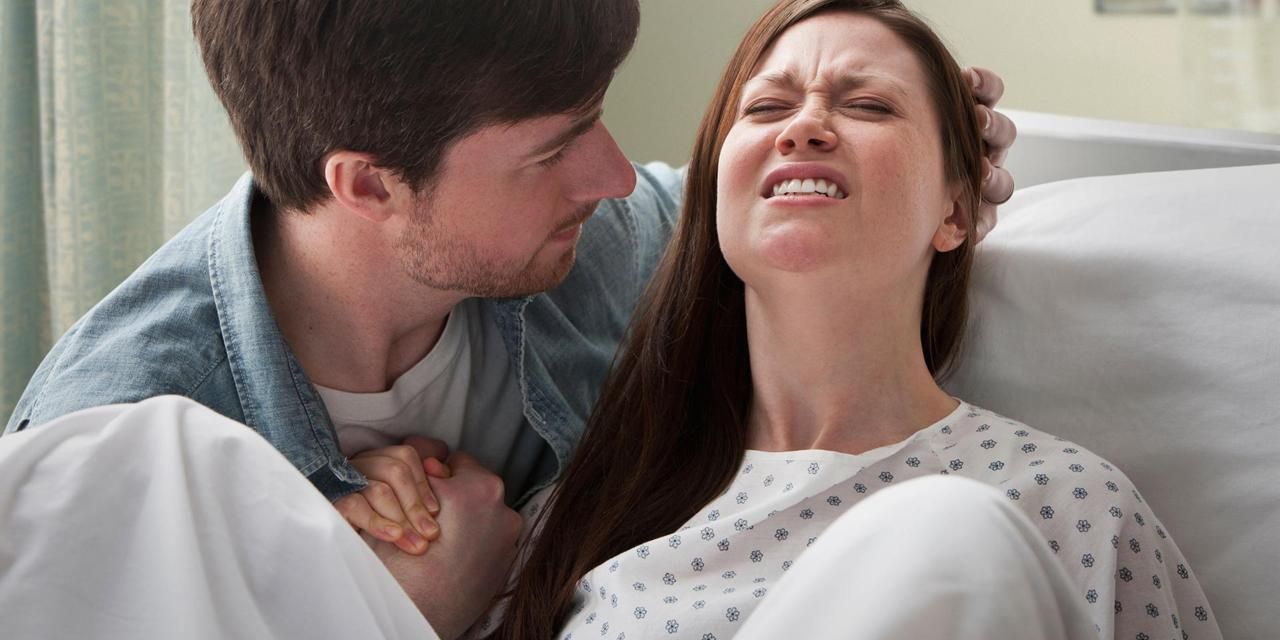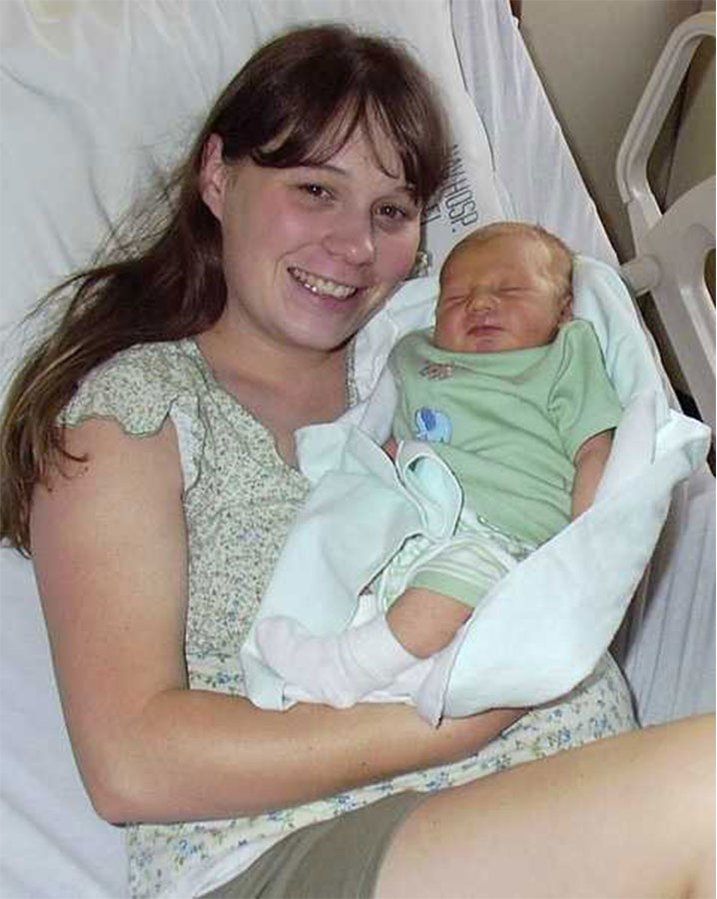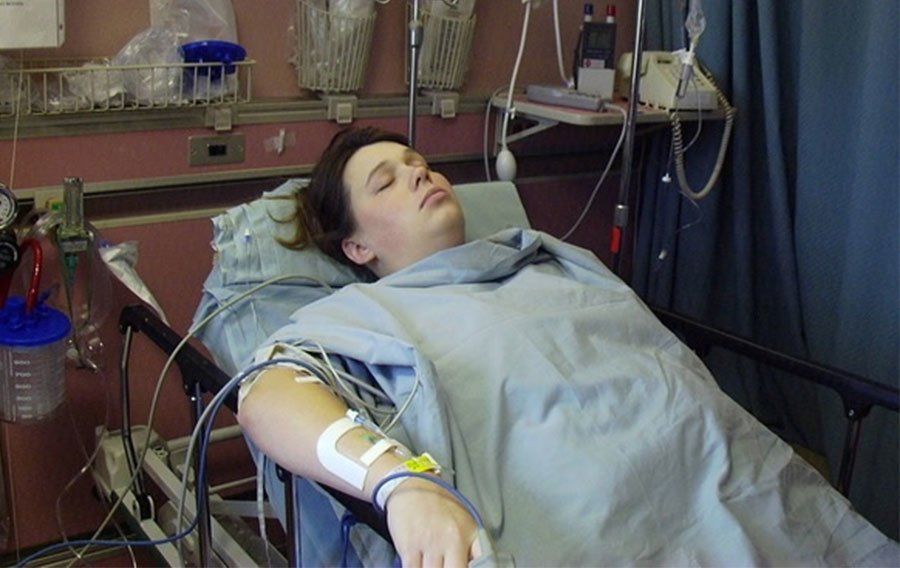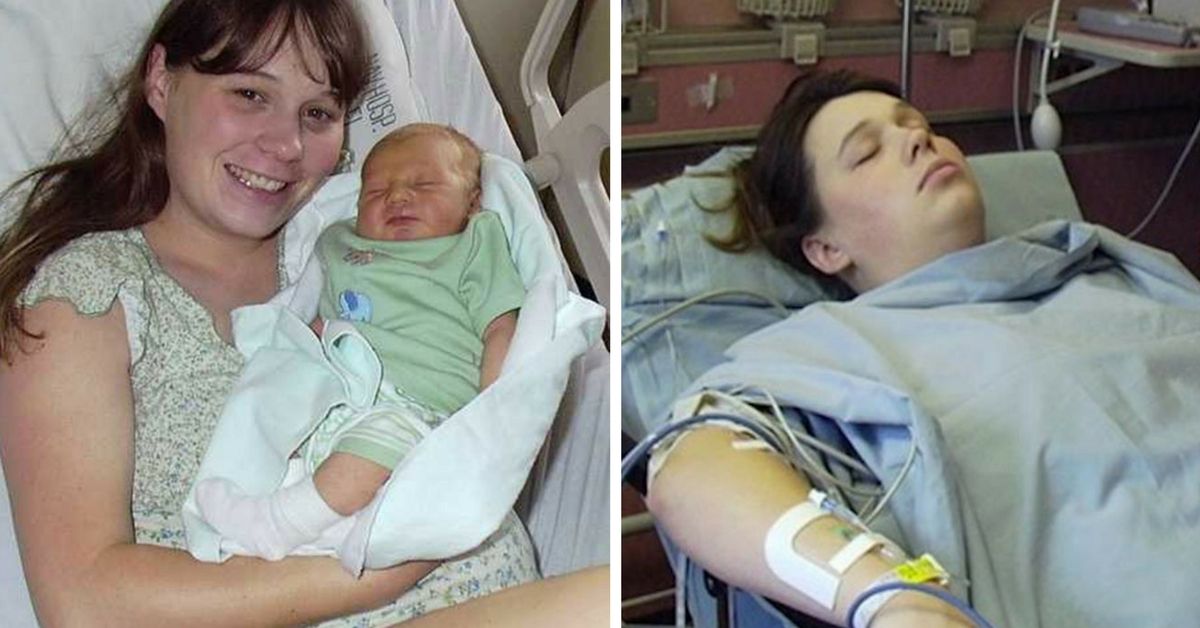We often hear mothers describe childbirth as a beautiful thing, but we're all aware that it is also very painful and can create a lot of complications for both the mom and baby.
Thanks to medical advancements that led to the availability of anesthetics like Epidural, these days, most women can give birth with minimal pain.
Epidural is administered to the spine to block the impulses that cause pain during labor. Depending on the dosage, it can make you partially or fully numb, but its effect tends to only last up to two hours.

For many women, it is normal to experience back soreness at the site of the catheter where the medicine was injected. Around two out of 100 women have reported severe, persistent headaches after the procedure, but that's actually caused by a puncture in the spinal cord sheath, and usually goes away once it's fixed.
However, in Amy Bright's case, one of the side effects continued to bother her 14 years after she gave birth to her youngest son, Jacob.
Instead of enjoying being a mom again, the 41-year-old started experiencing excruciating back pain two months after her 2003 C-section delivery at Naval Hospital in Jacksonville, Florida.
Bright told People that she spent the last few years going to doctor's appointments, but they just prescribed painkillers and muscle relaxers.

She was eventually diagnosed with sciatica since she was displaying symptoms similar to the condition, including pain in her back, left leg and foot.
"It has gotten to the point where it just burns constantly. I'm very scared of my future. [My leg] is getting weaker," Bright said. "I'm probably going to be in a wheelchair. It's scary because I don't know."
After more than a decade of living with severe pain, Bright finally underwent a CT scan in November 2017, and the results were not what she was expecting.
The scan revealed that there's a portion of the needle from Bright's epidural lodged in her spine.
Despite figuring out the root of Bright's health problems, doctors may not be able to do much to help her.
'
The Illinois mom told People that she "was absolutely livid and upset and scared," after finding out that the staff at the hospital where responsible for her pain.
"Every time I move and walk and bend and twist and sleep, that needle moves inside my spine. For 14 years, I've been creating scar tissue in my spine from this needle moving. I'm angry," she added.
According to her attorney, Sean Cronin, about three centimeters of the needle is trapped in Bright's spine, and most of it is "buried into the bone."
"This is something that was not disclosed," Cronin explained. "These needles are about 9 or 10 centimeters and they have a tip on the end that the provider is supposed to inspect to make sure they have the whole needle. They knew this was in her, according to our experts, because so much of the needle was missing. And the safety tip is still in her."

While Bright is thankful that doctors were able to determine the cause of her pain, her prognosis isn't looking very good.
She was told that there is a high risk of paralysis if the needle is removed. Had the hospital done it as soon as the mistake happened, she would've been fine. Now, she will have to look for alternatives.
"I don't know what my future holds. I'm very paranoid and scared," Bright admitted. "The reflexes in my legs are affected already. I'm trying to make arrangements for [physical] therapy, I'll probably be in that for the rest of my life. I'm probably going to be on medication for the rest of my life. I'm trying to prepare for my future and the help and support I'm going to need."
She told the news site that she and her husband, Navy veteran Charles, are "so upset," but they're not letting it show in front of their children, especially Jacob.
Bright has filed a complaint against the hospital and is planning to file a lawsuit in the coming months. She accused the staff of malpractice and fraud, claiming that they knew the needle broke off but did not say or do anything about it.
Poor woman, living with pain can significantly decrease a person's quality of life, so I hope doctors are able to find a solution for her as soon as possible.

